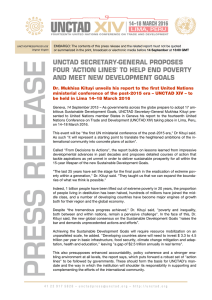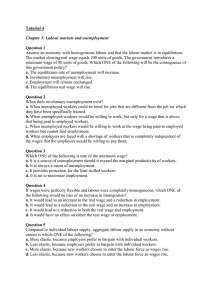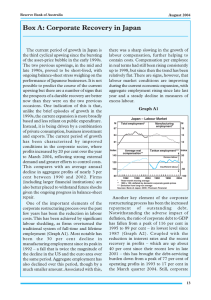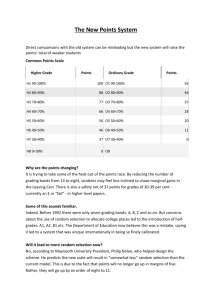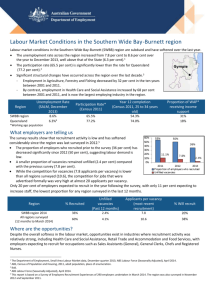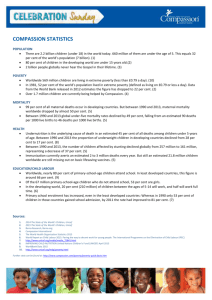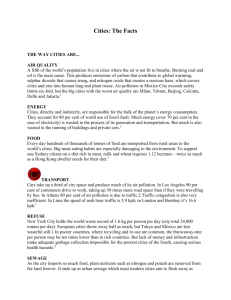Chapter 10
advertisement
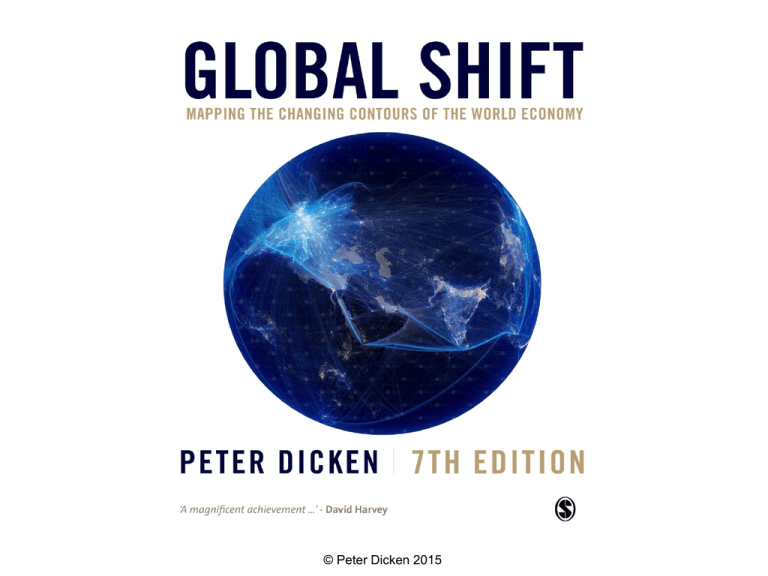
© Peter Dicken 2015 Winning and Losing: Where You Live Really Matters Global Shift Chapter 10 Review • Concepts to Review – Globalization, geographical inequalities, historical variations, technological change • Key Words – Development, underdevelopment, ‘archipelagos’, poverty, location Global Impacts • Globalization as Archipelago – – – • A person’s place of birth or residence determines their range of life chances These are unevenly distributed across the globe The global economy as an archipelago: economic activities as variably interconnected ‘islands’ Development and Underdevelopment – – Development and underdevelopment are two sides of the same coin At global scale, developed countries are clear winners • – • Not everyone in the developed world is a winner Changes in Developed and Developing Economies – Significant shifts in developed economies • • • – • ‘the 20 per cent of the world’s population living in the highest income countries have well over 80 per cent of world income, trade, investment and communications technology. The 20 per cent … in the poorest countries have around 1 per cent.’ move from manufacturing to service economy rising participation of women in the workforce the two shifts are related; women’s presence greater in service jobs Age composition of the population Links Between Developed and Developing Economies – – – Competition of cheaper manufactured goods from developing countries influences manufacturing in developed world Does this lead to deindustrialization and unemployment in developed world? Higher education may not insulate workers from pressures of global economy Income Distribution • Income and Poverty – Income is key to material well-being • is not an end in itself but a means to freedom • poverty as ‘unfreedom’ – Poverty gap is getting bigger (see Figure 10.8) • Uneven Income Distribution – Uneven income distributions have geographical manifestation – Differences reflect different histories and social policies – Inequality also exists on smaller scales, and on non-geographic scales • Income: Winners and Losers – – – – The Gini coefficient and other measures of income distribution Who is identified as a winner depends on the criteria used to identify them Emergence of transnational capitalist class ‘The 1%’: who are they, and why? Employment and Labour • Employment – – – – – Where will the jobs come from? For most people employment is the most important source of income However, there are not enough jobs to meet the growing demand Total global labour force rose by 17 per cent between 1995 and 2005 Projected growth to 2025, only 1 per cent will be in high-income countries • Unemployment – – – – – The end of work is nigh? Unemployment is always a selective process Women and young people are most vulnerable to unemployment Uneven trends are not due to a single set of causes Unemployment in older industrialized countries is cyclical, driven by recession Geographical Trends • Urban living • Technology transfer and TNCs • Manufacturing versus agriculture • Migration – Number of international migrants is 3 per cent of total global population • • • – – Benefits for sending country: reduces pressure on labour markets and produces remittances Negative consequences • • • – – lower than in nineteenth century when they were 10 per cent but in absolute terms, there are more migrants than ever majority are migrant workers migrants are often youngest and most active members of population they do not often get vocational training or bring with them initiative or employment when they return reinforces the conditions that created migration in the first place Benefits for host countries: balances out the ageing of the population Negative consequences: xenophobia, fears of loss of jobs
